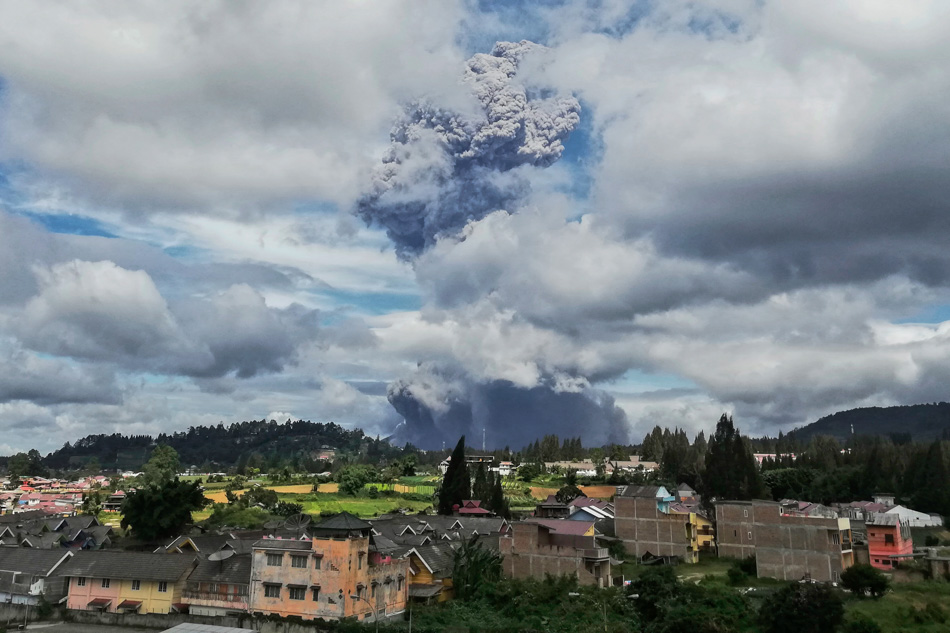Indonesia's Mt. Sinabung blasts tower of smoke and ash into sky
ADVERTISEMENT

Welcome, Kapamilya! We use cookies to improve your browsing experience. Continuing to use this site means you agree to our use of cookies. Tell me more!
Indonesia's Mt. Sinabung blasts tower of smoke and ash into sky
Agence France-Presse
Published Aug 10, 2020 04:54 PM PHT
MEDAN -- Indonesia's Mount Sinabung erupted Monday, belching a massive column of ash and smoke 5,000 meters (16,400 feet) into the air and coating local communities in debris.
MEDAN -- Indonesia's Mount Sinabung erupted Monday, belching a massive column of ash and smoke 5,000 meters (16,400 feet) into the air and coating local communities in debris.
The volcano on Sumatra island has been rumbling since 2010 and saw a deadly eruption in 2016.
The volcano on Sumatra island has been rumbling since 2010 and saw a deadly eruption in 2016.
Activity had picked up in recent days, including a pair of smaller eruptions at the weekend.
Activity had picked up in recent days, including a pair of smaller eruptions at the weekend.
There were no reports of injuries or deaths, but authorities warned of possible lava flows.
There were no reports of injuries or deaths, but authorities warned of possible lava flows.
ADVERTISEMENT
"People living nearby are advised to be on alert for the potential appearance of lava," Indonesia's Volcanology and Geological Hazard Mitigation Centre said in a statement.
"People living nearby are advised to be on alert for the potential appearance of lava," Indonesia's Volcanology and Geological Hazard Mitigation Centre said in a statement.
The crater's alert status remained at the second-highest level.
The crater's alert status remained at the second-highest level.
No one lives inside a previously announced no-go zone around the volcano, but small communities nearby were coated in a layer of thick ash from Monday's eruption.
No one lives inside a previously announced no-go zone around the volcano, but small communities nearby were coated in a layer of thick ash from Monday's eruption.
Sinabung roared back to life in 2010 for the first time in 400 years. After another period of inactivity it erupted once more in 2013, and has remained highly active since.
Sinabung roared back to life in 2010 for the first time in 400 years. After another period of inactivity it erupted once more in 2013, and has remained highly active since.
In 2016, seven people died in one of Sinabung's eruptions, while a 2014 eruption killed 16.
In 2016, seven people died in one of Sinabung's eruptions, while a 2014 eruption killed 16.
In late 2018, a volcano in the strait between Java and Sumatra islands erupted, causing an underwater landslide that unleashed a tsunami which killed more than 400 people.
In late 2018, a volcano in the strait between Java and Sumatra islands erupted, causing an underwater landslide that unleashed a tsunami which killed more than 400 people.
Indonesia is home to about 130 active volcanoes due to its position on the "Ring of Fire", a belt of tectonic plate boundaries circling the Pacific Ocean where frequent seismic activity occurs.
Indonesia is home to about 130 active volcanoes due to its position on the "Ring of Fire", a belt of tectonic plate boundaries circling the Pacific Ocean where frequent seismic activity occurs.
ADVERTISEMENT
ADVERTISEMENT



